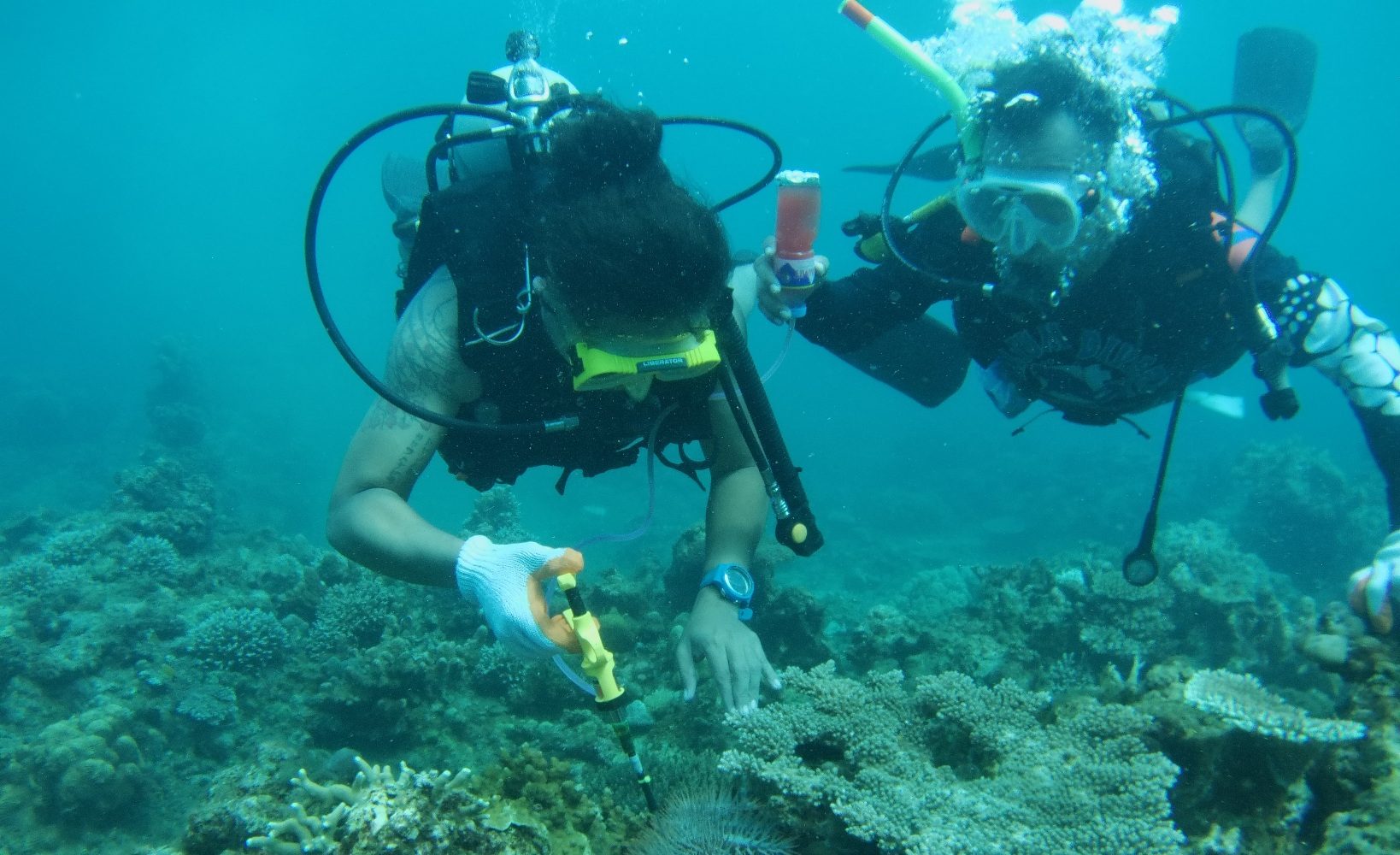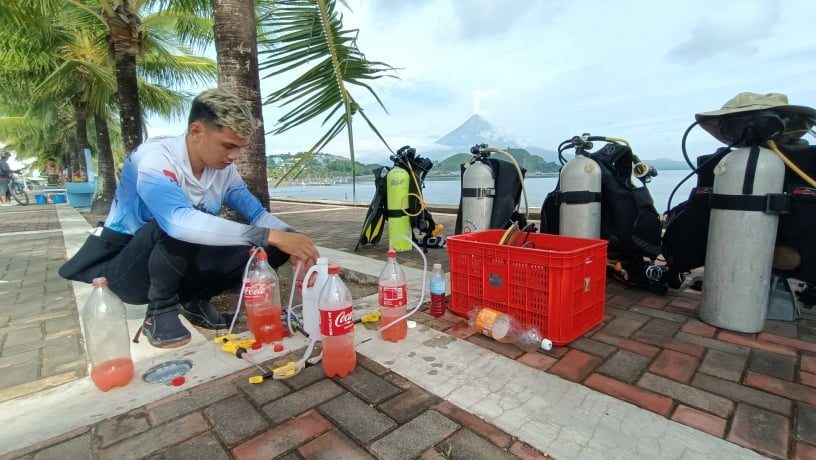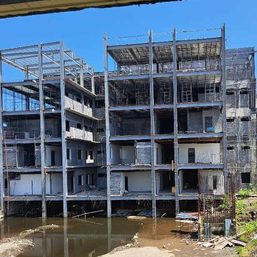SUMMARY
This is AI generated summarization, which may have errors. For context, always refer to the full article.

ALBAY, Philippines – With vinegar and injection guns, a team of divers, including Legazpi city government workers, environmentalists, academics, and students, joined forces to combat the crown of thorns infestation plaguing the waters of Albay Gulf.
Rhoneil Estevez, the technical coordinator of the Marine Eco Diver Project for coral rehabilitation in Albay Gulf, led the collaborative effort over the weekend.
Employees from the Integrated Coastal Resource Management of the Legazpi city government and divers from Divine Word College of Legazpi joined Estevez in their mission to eradicate the crown of thorns infestation, which has been wreaking havoc on the Pasig Reef.

Their approach involved injecting vinegar into the crown of thorns and leaving them in place on the reef.
The method aims to curb the infestation at Pasig Reef, which poses a threat to the health of the corals.
Estevez said vinegar or acetic acid proves to be an effective and environmentally friendly solution for addressing the crown of thorns infestation.
Estevez said local fishermen had alerted them to a severe crown of thorns infestation at Pasig Reef, prompting this swift response due to the widespread damage it was causing.
“The whole Pasig Reef is severely affected by infestation. One female of crown thorn could produce 48 to 54 million eggs in a single spawning. It can destroy corals at six square meters in a year. So, we need to act soon considering that Pasig Reef is the home of good corals” Estevez said.
He said white vinegar was selected due to its non-toxic nature, and a colorant was added to the solution to monitor the reloading of the injection device.
Before venturing to Pasig Reef, Estevez told the divers to take precautions to avoid potential stings from the crown of thorns.
Benjie Sales, a professor at Divine Word College of Legazpi (DWCL), and volunteer students from the college helped to combat the infestation. Notably, JP Chua, a grade 12 student at DWCL, was the youngest volunteer diver.
Engineer Benigno Redito, the officer-in-charge of Integrated Coastal Resource Management (ICRM), said Pasig Reef spans approximately eight hectares, encompassing the areas of Arimbay and Rawis. This reef is a favored diving site for both local and foreign diving enthusiasts.
Redito stressed the importance of addressing the crown-of-thorns starfish, notorious for its spiny and toxic nature, as they are known to consume extensive areas of coral reef.
“It’s worth noting that outbreaks of this species tend to occur when ocean temperatures and nutrient levels rise, leading to infestations that devastate large sections of coral reef throughout the Philippines,” Redito said.
Legazpi City boasts marine reserves covering 37.24 hectares, which includes a coral reef area spanning approximately 10.3 square kilometers, as well as 72 hectares of mangrove forest.
Legazpi City offers 16 dive sites, including well-known locations like Bulang Buya (Denson Reef), Sadit na Itom na Buya, Itom na Buya, Barao Reef, Bigaa Beach, Pasig Out, Pasig In, Canal, Sleeping Lion, Dakula na Masolog, Sadig na Masolog, Malaya, Sagoron, Maslog Out, Maslog In, and Kabunturan.
Kabunturan, located within Poliqui Bay, is a designated marine sanctuary under Legazpi City’s jurisdiction. These 16 dive sites are key marine tourism destinations, drawing both local and foreign tourists.
Albay Gulf, renowned for its rich marine life, serves as a significant fishing ground, occasionally attracting the world’s gentle giants for feeding.
Redito said protecting coral reefs is essential to meet the protein requirements of the local populace. Restoration efforts encompass coral replanting and the regeneration of fish shelters to expand the habitat.
The establishment of the ICRM unit by the city government is a strategic move aimed at safeguarding the city’s natural marine resources and promoting sustainable development to ensure food security and a steady supply of protein for Legazpi’s burgeoning population.
Albay Gulf, serving as a gateway to the Pacific Ocean, is home to thriving coral reefs and tuna. To expand the marine habitat, government officials and volunteers are hard at work five days a week, reviving the reefs, eradicating the destructive crown of thorns starfish, and conducting a cleanup initiative known as “Scuba Basurero” (marine garbage collector). – Rappler.com
Add a comment
How does this make you feel?










There are no comments yet. Add your comment to start the conversation.